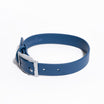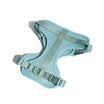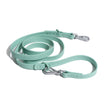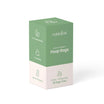Most cats treat countertops like VIP lounges, but that doesn't mean you have to allow it. You can simply stop wondering "how to stop cats from jumping on counters" and follow this handy guide. With the right mix of creativity, consistency, and sass (yes, you read that right), you can put an end to all that counter-jumping madness.
Kitchen counters are not cat playgrounds. Between the glassware, the hot stove, and your fresh sandwich, there should be no paws allowed. Your feline friend may love heights, but you love a clean, fur-free space even more. Let's make it happen.
Why Do Cats Jump on Counters

When our feline friends jump on counters, they're simply following their natural urges. Cats like heights, they love action, and they enjoy sticking their nose where it doesn't belong. That shiny faucet? Fascinating. That bowl of food? Irresistible.
It's not rebellion but instinct (with a side of attitude). So if your kitty treats the counter like a personal jungle gym, it's just cat logic doing its thing.
Common Motivations Behind Counter-Jumping
Before you can redirect your cat's behavior, you need to know what's fueling the acrobatics. Here are the usual suspects:
- Seeking Food or Treats. If there's even a crumb left behind, your cat will find it. Kitchen counters are snack central in their eyes.
- Curiosity and Exploration, Including Unfamiliar Scents or Objects. New smell? Strange gadget? Your feline sidekick must investigate!
- Attention-Seeking Behavior or Following Their Owner's Actions. If you're always at the counter, they might think it's a hot spot for bonding time.
- Natural Hunting Instincts and Desire for a High Vantage Point. Felines love a good lookout. Counters let them watch the world pass (and look for prey).
- Boredom or Lack of Stimulation. Counter-hopping becomes their DIY entertainment.
- Trying To Catch Something. A bug flies by, and suddenly, your cat's a trapeze artist. The hunt is on.
How To Recognize if Your Cat Is Seeking Attention
Attention-seeking felines love a good audience, and if jumping on kitchen counters gets your eyes (and your voice), they'll keep doing it. Watch for the little drama cues, like meowing nonstop while making eye contact, as well as leaping, knocking something over, and then staring like, "Well? You watching?"
Some cats even wait until you notice before jumping down like nothing happened. So, if your kitty launches onto the counter the moment you walk into the kitchen, you're not imagining things. They want your focus, and they're not subtle about it.
How To Stop a Cat From Jumping on the Counter

Curbing your kitty's hopping tendencies starts with understanding their motivation. You're not trying to punish them; you're trying to redirect their energy somewhere more appropriate. Most cats respond better to new options than hard no's. Give them something more interesting than a countertop, and they'll often take the trade.
And yes, consistency matters. If one day you let them chill near the toaster and the next you're yelling, "Get down," you'll just confuse them. Keep your vibe steady and your expectations clearer than your countertop.
Creating a Cat-Friendly Environment
A sturdy cat tower or climbing tree near a window can give your cat a view and a vibe. You can also add cozy alternatives like a cat bed on a shelf or a tall piece of furniture they're allowed to claim. Toss in a few toys, snacks, and maybe even a little running water fountain to keep things interesting.
If your cat thinks their designated hangout is cooler than your countertop, they'll switch spots with no bribery required. Just make the floor-to-ceiling journey worth their while.
Training Techniques To Discourage Jumping
The goal is to teach your cat that the counter is boring while other spots are way more fun. Start small, stay consistent, and yes, bribes are totally allowed!
- Clicker Training. Reward them with snacks when they choose the floor or cat tower instead of the counter.
- Ignore the Jump. No eye contact, no scolding. Don't reward bad behavior with attention.
- Use Verbal Cues. Say a firm "down" or "off" the moment they jump.
- Redirect Immediately. Guide them toward a toy, tower, or snack. Make the new spot exciting.
- Create a Routine. Schedule playtime or feeding away from the kitchen to break the counter habit.
Positive Reinforcement for Correct Behavior
Positive reinforcement is your best friend when teaching your cat to skip the counter. Every time they choose their tower or literally anywhere other than your kitchen countertops, praise them like they just won an Oscar.
Food and toys work great. Even a few loving pets or playful scritches go a long way. If your kitty connects good behavior with good stuff, they'll start making smarter choices on their own. So, keep your pockets full of goodies and your cheers ready.
Using Deterrents To Keep Your Cat off the Counter
Sometimes, you need to make the counter less fun. The trick is to keep things safe, simple, and mildly annoying (for your cat, not you). Most felines hate weird textures, loud sounds, or sticky surprises. Use that to your advantage.
Counter-jumping doesn't stand a chance when the surface feels off-limits. Remember, this isn't punishment but redirection with a dash of sass.
Safe Deterrents for Cats
Use safe deterrents that cats dislike but won't harm them. These solutions can turn their favorite launchpad into a no-fun zone:
- Crinkled Aluminum Foil. Cats hate the sound and feel. Lay it flat across the counter, and your feline friend will bounce faster than a dropped cookie sheet.
- Double-Sided Tape. Sticky paws? No thanks. Place some sticky tape along the edges where your pet usually lands.
- Cookie Sheets on the Edge. One misstep and the noisy clatter sends them running. They're not hurt, just unimpressed.
- Make Counters Boring. Keep kitchen counters clean. No food = no reason to jump. A spotless surface is a cat's worst enemy.
- Natural Calming Aids. If your cat jumps from nervous or fearful energy, CBD (cannabidiol) may be useful. It works with your kitty's endocannabinoid system (ECS) to naturally promote calm without any unwanted side effects. Try HolistaPet's Calming Cat Treats, Soft Chews, Oils, and Capsules for the best options out in the market.
How To Set Up Anti-Jumping Barriers
If your cat can't reach the counter, it loses its sparkle. Barriers don't need to be fancy, just effective and annoying enough to make them say "nope." Here's what you can do:
- Place Lightweight Objects at the Edge. Cookie trays or plastic lids slide and clatter when touched.
- Stack Empty Boxes or Storage Bins. A temporary wall of cardboard chaos can block their usual takeoff zone.
- Use Folded Chairs or Baby Gates. For a narrow galley kitchen, block access with something they can't easily climb or squeeze through.
- Try Scent-Based Barriers. A few orange peels or pet-safe sprays near the edge can create an invisible "keep out" zone.
- Rearrange Furniture. If a table, shelf, or chair gives your kitty a step up, move it.
Preventing Future Counter-Jumping
After your cat leaves the countertops alone, you've got to keep that streak alive. Stay one step ahead and ensure they don't get bored or tempted to relive their counter-leaping glory days.
- Maintaining Consistent Training and Habits. Keep reinforcing the good stuff. Praise them when they choose their cat tower, toss a treat when they stay grounded, and avoid sending mixed messages. One countertop cuddle can undo a lot of progress. See more on cat behavior training here.
- Encouraging Healthy Alternatives for Climbing. Make their favorite high spots irresistible. Add toys, snacks, or soft beds to cat trees and window perches. The more exciting those areas are, the less interesting your counter becomes.
When To Seek Professional Help for Jumping Behavior

If your cat still leaps to your countertops like it's their full-time job despite all your clever tricks, it might be time to call in a pro. A visit to the vet can help rule out any underlying problems, such as restlessness or agitation, that make your kitty jumpy. Some behaviors caused by stress or deeper issues can go beyond what foil and snacks can fix.
If everything checks out, a feline behaviorist can step in with custom training tips that match your feline's unique personality. Sometimes, a little expert backup is the best move.
Final Thoughts on Keeping Cats off Counters and Tabletops
Your feline friend may think they run the kitchen, but with the right tools, tips, and a little attitude, you can take back the countertops. From sticky tape and baking sheets to cat trees and tasty rewards, there's a fix for every furry daredevil.
Need some calming support? HolistaPet's calming CBD products for cats can help ease restless energy and support positive behavior. Whether your kitty's chasing crumbs or just craving your attention, you've got what it takes to keep them grounded.
Sassy, yes. Smart, absolutely. And now, counter-free!







![Probiotics For Dogs [Soft Chews] - HolistaPet](http://www.holistapet.com/cdn/shop/files/Probiotic-Infographic-1_472d7a29-e30c-435a-9638-1365d8c3a9f9.jpg?v=1725384841&width=104)



























Leave a comment
All comments are moderated before being published.
This site is protected by hCaptcha and the hCaptcha Privacy Policy and Terms of Service apply.